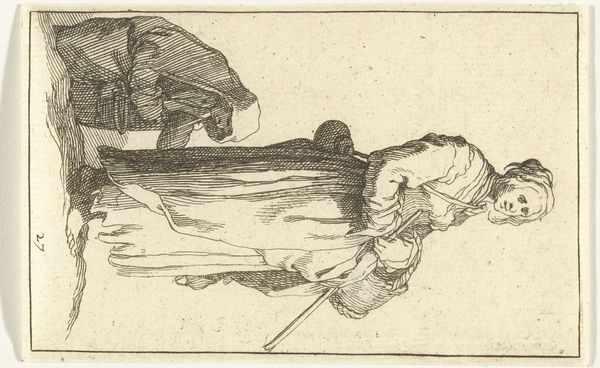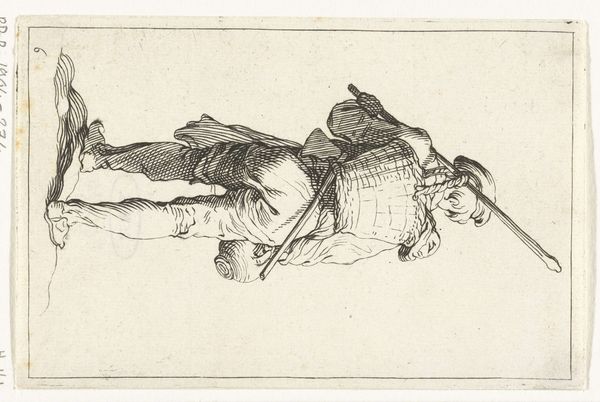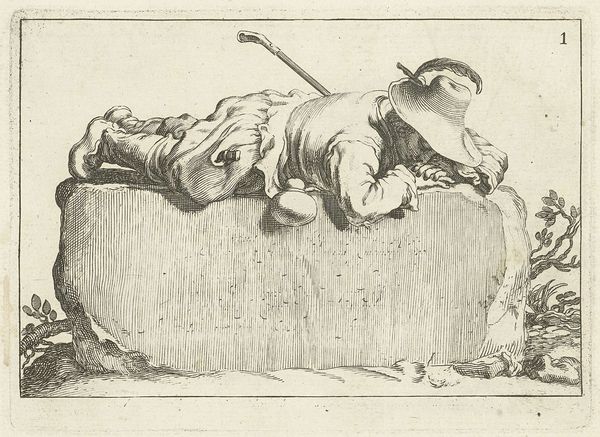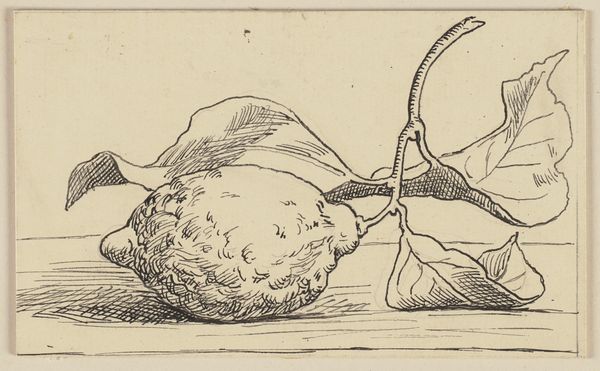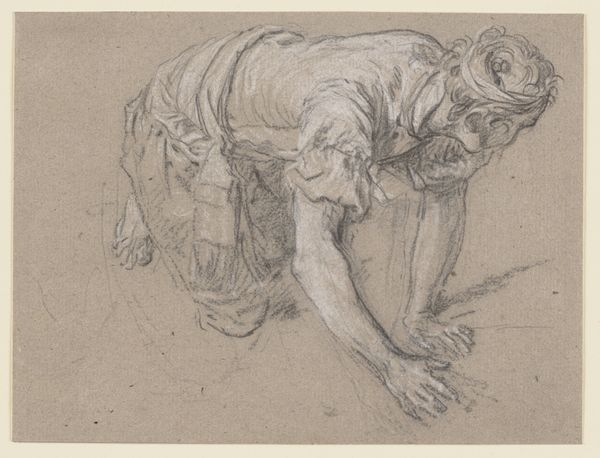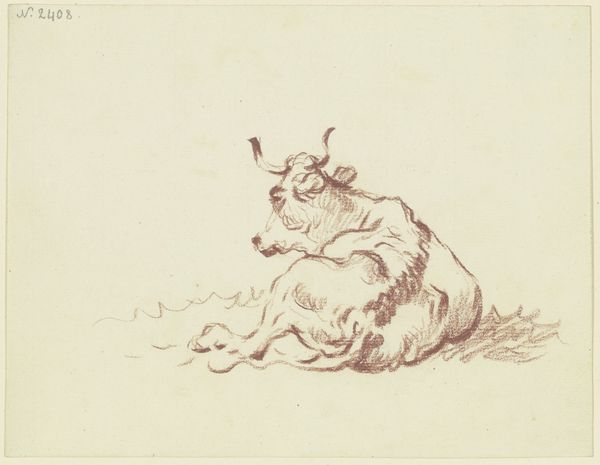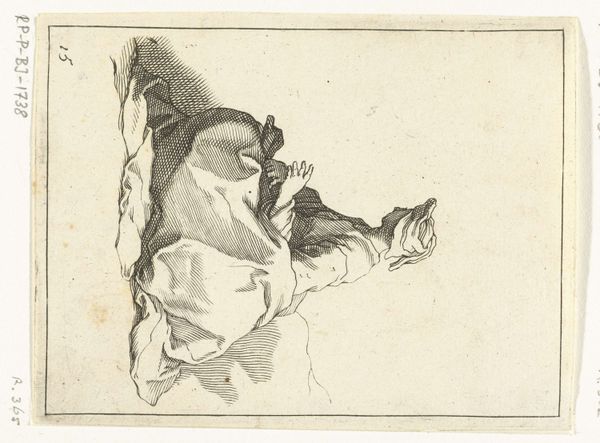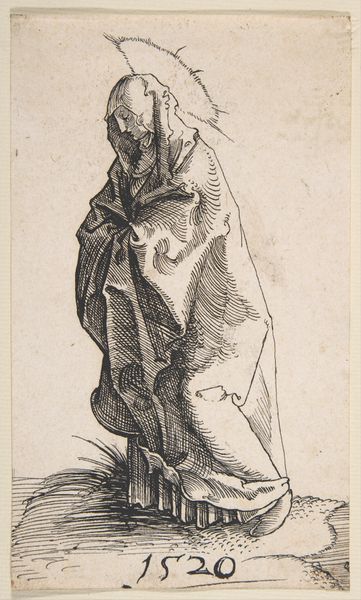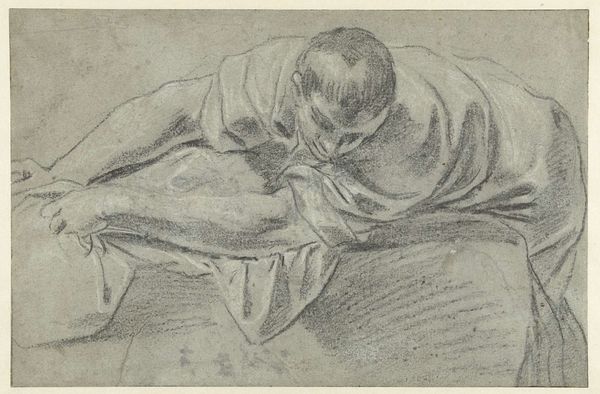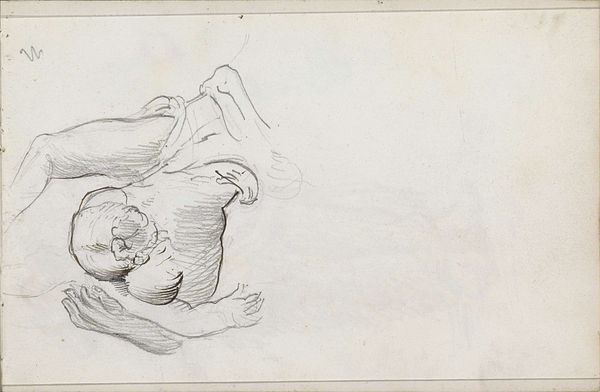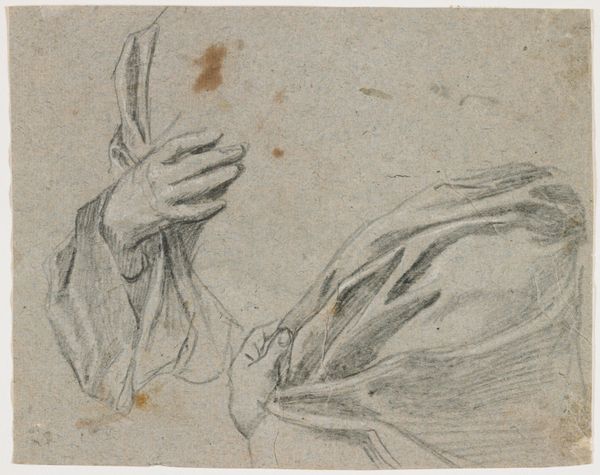
drawing, graphite
#
drawing
#
baroque
#
figuration
#
graphite
#
genre-painting
Dimensions: overall: 12.2 x 14.2 cm (4 13/16 x 5 9/16 in.)
Copyright: National Gallery of Art: CC0 1.0
Jan Both sketched this cavalier with black chalk and white gouache on blue paper in the mid-17th century. Note how the fallen cavalier clutches a staff; its ornamental orb speaks of authority, yet here it lies impotent on the ground. This motif of the fallen figure, still gripping a symbol of power, echoes through art history. We see it in depictions of defeated Roman emperors, or even earlier, in the fallen warriors of ancient Greek friezes. This is the pathos formula, deeply rooted in our cultural memory. The orb, once a symbol of dominion, becomes a poignant reminder of earthly transience. Its circular form, unbroken, mocks the finality of death. Consider how such symbols evolve, appearing in religious contexts, perhaps adorning a saint's staff, then resurfacing in secular art, always carrying a residue of their past. The human mind, it seems, cannot escape the cyclical nature of symbols, endlessly reinterpreting and adapting them to new emotional landscapes.
Comments
No comments
Be the first to comment and join the conversation on the ultimate creative platform.
